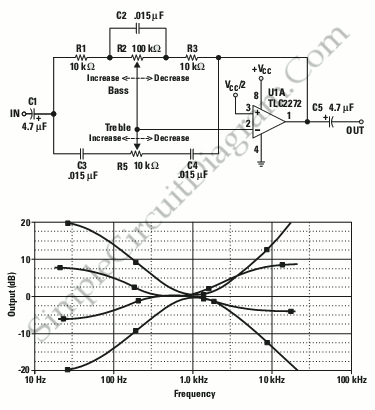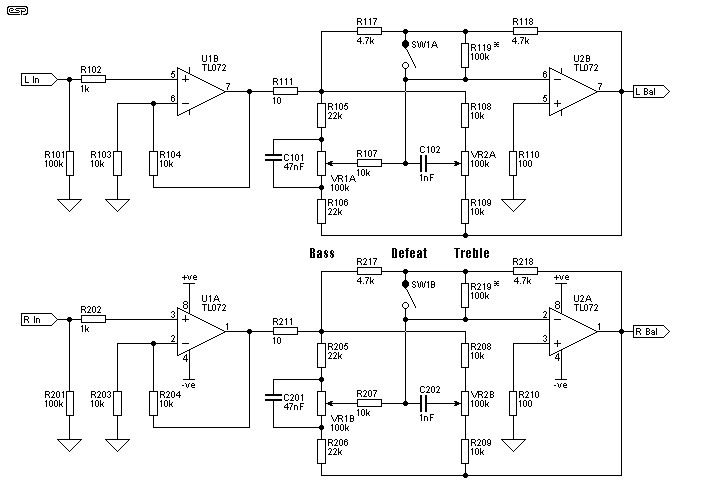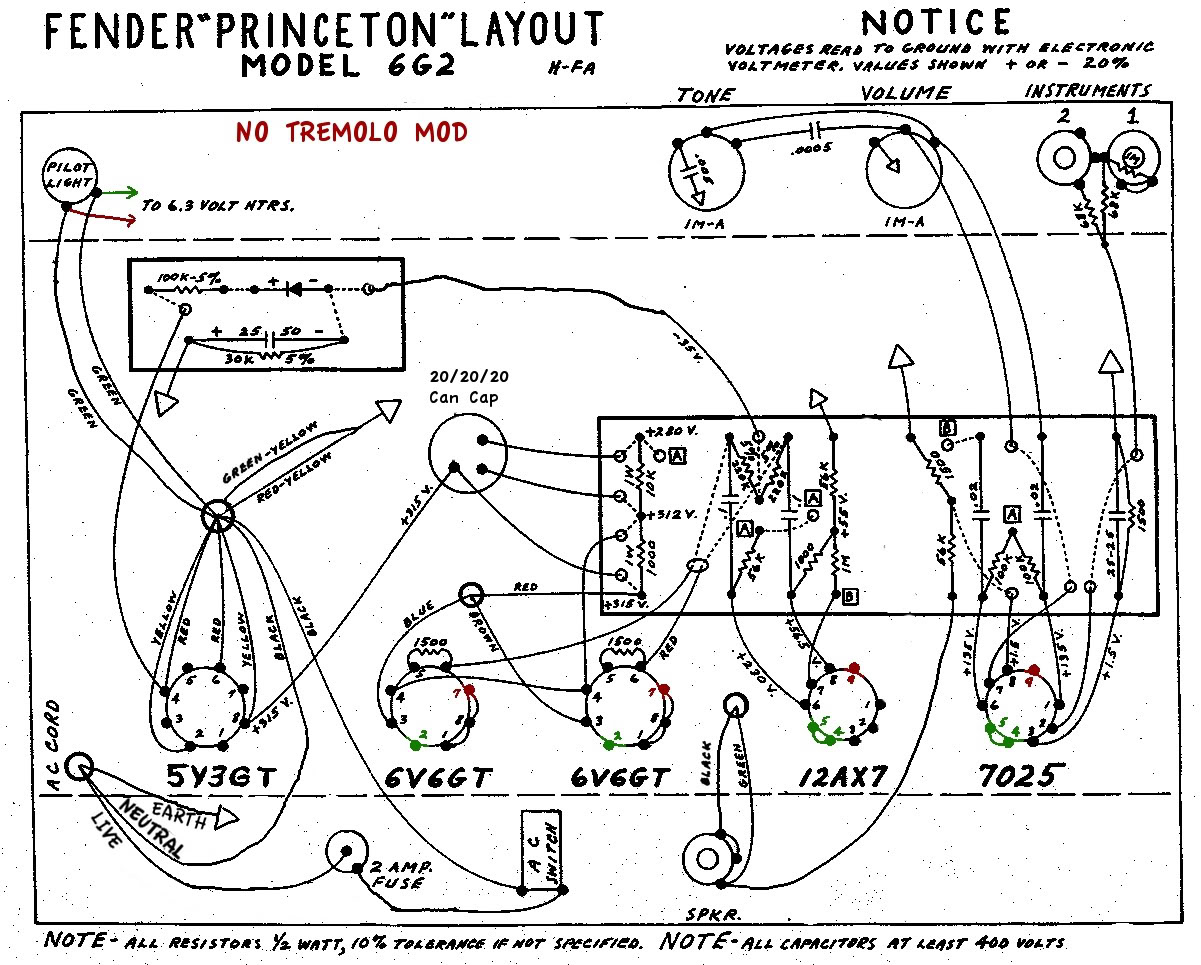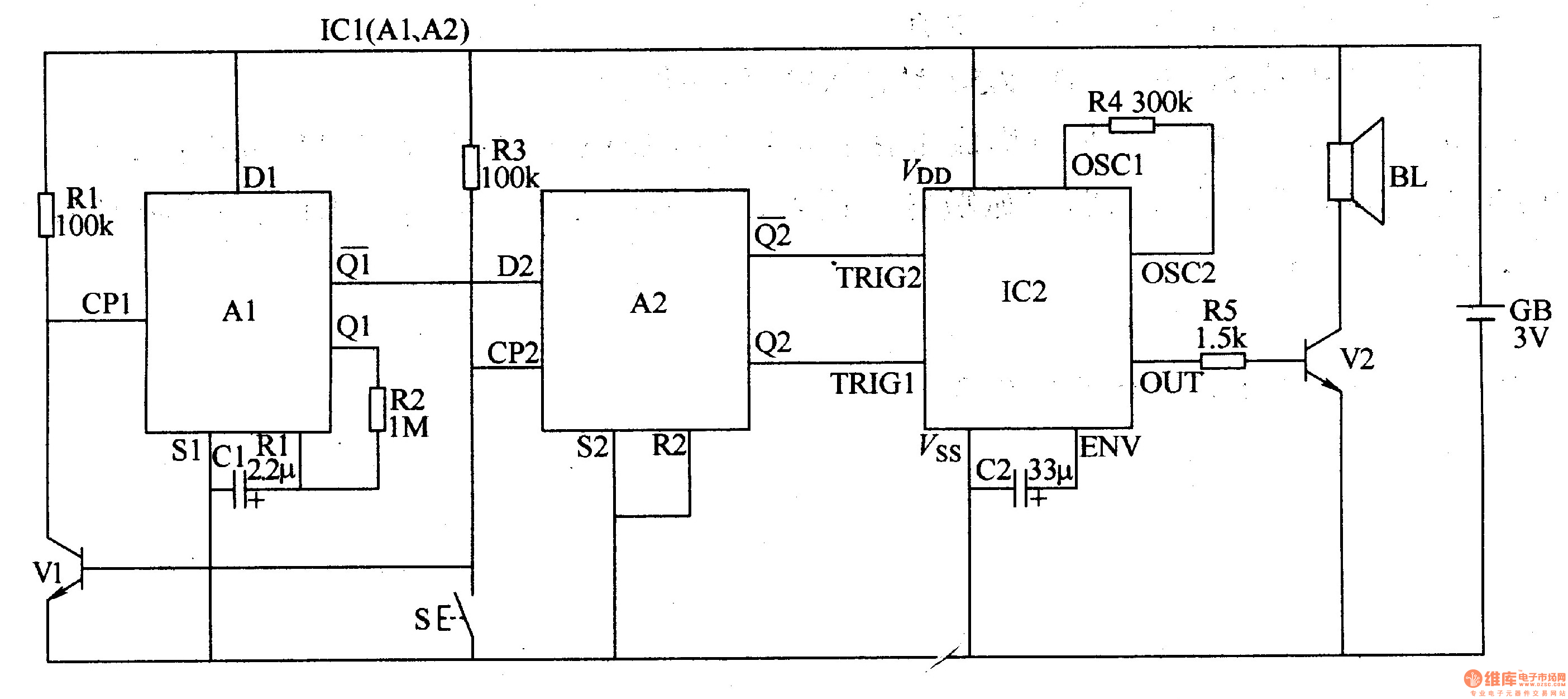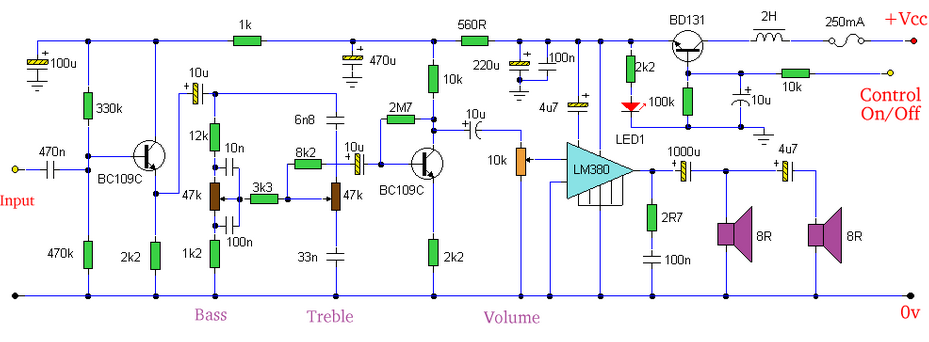
dtmf tone decoder
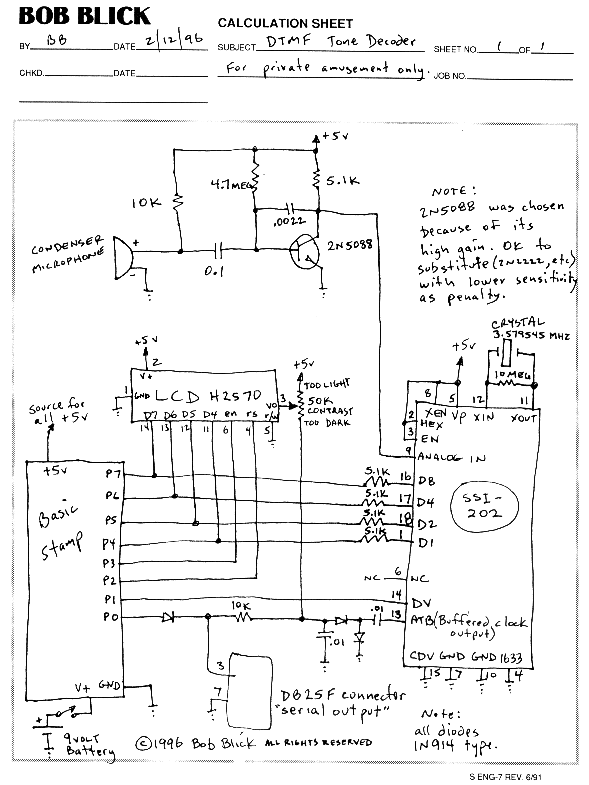
This project has an impractical requirement or utilizes components that are no longer available. It is provided for reference or inspiration only and is considered unsupported. The project displays telephone numbers decoded from tones, specifically telephone touchtones or Dual Tone Multifrequency (DTMF) tones. This project does not relate to Caller ID. A microphone captures the tones, a preamplifier amplifies the signals, and an SSI-202 DTMF chip decodes the tones. A Basic Stamp microcontroller serves as an interface to an LCD display and also provides RS-232 serial output. It is advised not to attempt building this project due to high costs and the obsolescence of some components. Dave Schmidt is developing a reasonably priced DTMF decoder with similar features. For those interested in purchasing a tone decoder, it is recommended to visit his webpage. Building a custom tone decoder from scratch may pose challenges in sourcing the SSI-202 chip, which was previously sold by Radio Shack and B. G. Micro, though the latter may still have a datasheet available. Silicon Systems, the manufacturer of the SSI-202 chip, has been acquired by Texas Instruments. If access to Mitel 8870 DTMF chips is available, they can be used in this circuit with pin modifications to align with the corresponding functions. A modification allowing direct connection to phone lines has been included due to popular demand; however, this modification has not been tested and may violate laws in certain regions regarding homemade devices connected to phone lines. The software for this project is a basic program, and it is anticipated that more skilled individuals will develop improved versions to share. The existing program functions adequately but is quite simple and must be renamed with a .bas extension before loading it into a Basic Stamp.
This electronic project outlines a system for decoding telephone touchtones using DTMF technology. The system architecture includes a microphone for tone capture, a preamplifier for signal amplification, and a DTMF decoder chip for tone interpretation. The SSI-202 chip, while no longer in production, serves as the core component for decoding the DTMF signals received from the microphone.
The preamplifier amplifies the audio signals captured by the microphone to a level suitable for processing by the DTMF decoder. The Basic Stamp microcontroller acts as a bridge between the decoder and the output systems, including an LCD display for visual output and an RS-232 interface for serial data communication. This setup allows for user-friendly interaction and data transmission.
For those considering alternatives, the Mitel 8870 DTMF chip can be integrated into the circuit with appropriate pin adjustments. The project also includes a modification for direct connection to telephone lines, although this feature requires careful consideration of legal implications and has not been experimentally validated.
The software component is a rudimentary program that interfaces with the Basic Stamp, allowing for basic functionality in decoding and displaying the DTMF signals. Users are encouraged to enhance the software to improve performance and usability. Proper file management is essential, as the program must be saved with a .bas extension to ensure compatibility with the Basic Stamp platform.
Overall, while the project serves as a valuable reference for understanding DTMF decoding and system design, it is recommended to explore commercially available solutions or updated components for practical implementation.This project has an impossible requirement or uses parts that are no longer available. It is here for reference or inspiration only. Consider it unsupported . This project displays telephone numbers decoded from tones. Specifically, telephone touchtones. Dual Tone Multifrequency (DTMF) tones. This has nothing to do with CallerID. A microphone pi cks up the tones, a preamplifier boosts the signals, an SSI-202 DTMF chip decodes the tones, a Basic Stamp acts as an interface to an LCD display and also provides RS-232 ³ serial output. Don`t try to build this project. It`s too expensive to do it this way, and some parts are obsolete. Dave Schmidt is making a reasonably priced DTMF decoder with similar features. Check out his web page: and see what his tone decoders are like. They look really good. If you`d like to buy a tone decoder, please don`t write me. If you`d like to build your own tone decoder from scratch , you might have trouble finding the SSI-202 chip.
Radio Shack used to sell them. B. G. Micro, used to sell them and might still have a datasheet, but no stock of the part. Silicon Systems, maker of the SSI-202 chip, has been dissolved by Texas Instruments. If you have access to Mitel 8870 DTMF chips, you could use it in this circuit if you change the pins to match the corresponding functions. I have not done it, so I can`t help you. Due to popular demand, I have included a modification that allows direct connection to the phone lines.
I must say, however, that I have not tried the modification(I have been told it does work) and it`s probably against the laws of certain countries, states, provinces, townships, and telephone companies to connect home-made devices to the phone lines. The software for this project is only a bare-bones program. The smart people that build this circuit will surely write some better programs and send them to me to include in this page.
This program works fine, it`s just very basic. You must rename it with a. bas extension before loading it into a Basic Stamp. 🔗 External reference
This electronic project outlines a system for decoding telephone touchtones using DTMF technology. The system architecture includes a microphone for tone capture, a preamplifier for signal amplification, and a DTMF decoder chip for tone interpretation. The SSI-202 chip, while no longer in production, serves as the core component for decoding the DTMF signals received from the microphone.
The preamplifier amplifies the audio signals captured by the microphone to a level suitable for processing by the DTMF decoder. The Basic Stamp microcontroller acts as a bridge between the decoder and the output systems, including an LCD display for visual output and an RS-232 interface for serial data communication. This setup allows for user-friendly interaction and data transmission.
For those considering alternatives, the Mitel 8870 DTMF chip can be integrated into the circuit with appropriate pin adjustments. The project also includes a modification for direct connection to telephone lines, although this feature requires careful consideration of legal implications and has not been experimentally validated.
The software component is a rudimentary program that interfaces with the Basic Stamp, allowing for basic functionality in decoding and displaying the DTMF signals. Users are encouraged to enhance the software to improve performance and usability. Proper file management is essential, as the program must be saved with a .bas extension to ensure compatibility with the Basic Stamp platform.
Overall, while the project serves as a valuable reference for understanding DTMF decoding and system design, it is recommended to explore commercially available solutions or updated components for practical implementation.This project has an impossible requirement or uses parts that are no longer available. It is here for reference or inspiration only. Consider it unsupported . This project displays telephone numbers decoded from tones. Specifically, telephone touchtones. Dual Tone Multifrequency (DTMF) tones. This has nothing to do with CallerID. A microphone pi cks up the tones, a preamplifier boosts the signals, an SSI-202 DTMF chip decodes the tones, a Basic Stamp acts as an interface to an LCD display and also provides RS-232 ³ serial output. Don`t try to build this project. It`s too expensive to do it this way, and some parts are obsolete. Dave Schmidt is making a reasonably priced DTMF decoder with similar features. Check out his web page: and see what his tone decoders are like. They look really good. If you`d like to buy a tone decoder, please don`t write me. If you`d like to build your own tone decoder from scratch , you might have trouble finding the SSI-202 chip.
Radio Shack used to sell them. B. G. Micro, used to sell them and might still have a datasheet, but no stock of the part. Silicon Systems, maker of the SSI-202 chip, has been dissolved by Texas Instruments. If you have access to Mitel 8870 DTMF chips, you could use it in this circuit if you change the pins to match the corresponding functions. I have not done it, so I can`t help you. Due to popular demand, I have included a modification that allows direct connection to the phone lines.
I must say, however, that I have not tried the modification(I have been told it does work) and it`s probably against the laws of certain countries, states, provinces, townships, and telephone companies to connect home-made devices to the phone lines. The software for this project is only a bare-bones program. The smart people that build this circuit will surely write some better programs and send them to me to include in this page.
This program works fine, it`s just very basic. You must rename it with a. bas extension before loading it into a Basic Stamp. 🔗 External reference
